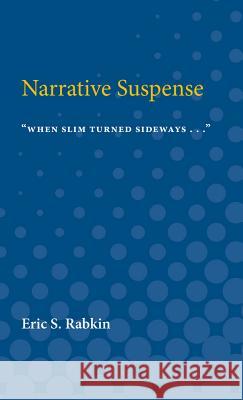Narrative Suspense » książka
Narrative Suspense
ISBN-13: 9780472751884 / Angielski / Miękka / 1973 / 206 str.
"When Slim Turned Sideways . . ."--this is narrative suspense, and if well done propels the reader on into and through a novel, or folktale, or printed play, or epic poem. How does it work? Is it a matter of plot only? Why do some works rivet our attention from the first page, while others obviously do not? These are among the deceptively simple questions taken up in Eric Rabkin's seminal study of narrative suspense. Using the insights afforded by structuralism, linguistics, and modern criticism--and basing his discussion on close readings of many well-known works--Rabkin provides at once an original work in literary theory and a remarkably practical account of how successful narrative establishes and sustains interest on several levels. Suspense, Rabkin shows, is involved not only in the plot of a narrative, but in its thematic development, character development, and style as well. This broad understanding enables the author to develop a coherent theoretical description of suspense, using the terminology of rhetoric. The most startling result of this approach is a schematic representation for literary genres that, though arrived at theoretically, corresponds almost exactly to our intuitive categorization of literary works. Narrative Suspense can be read with ample profit by interested layman and professional critic alike. With wit and intelligence, the book clarifies an oft-perceived phenomenon--the fundamental importance of suspense, broadly defined, in all great works of literature.











